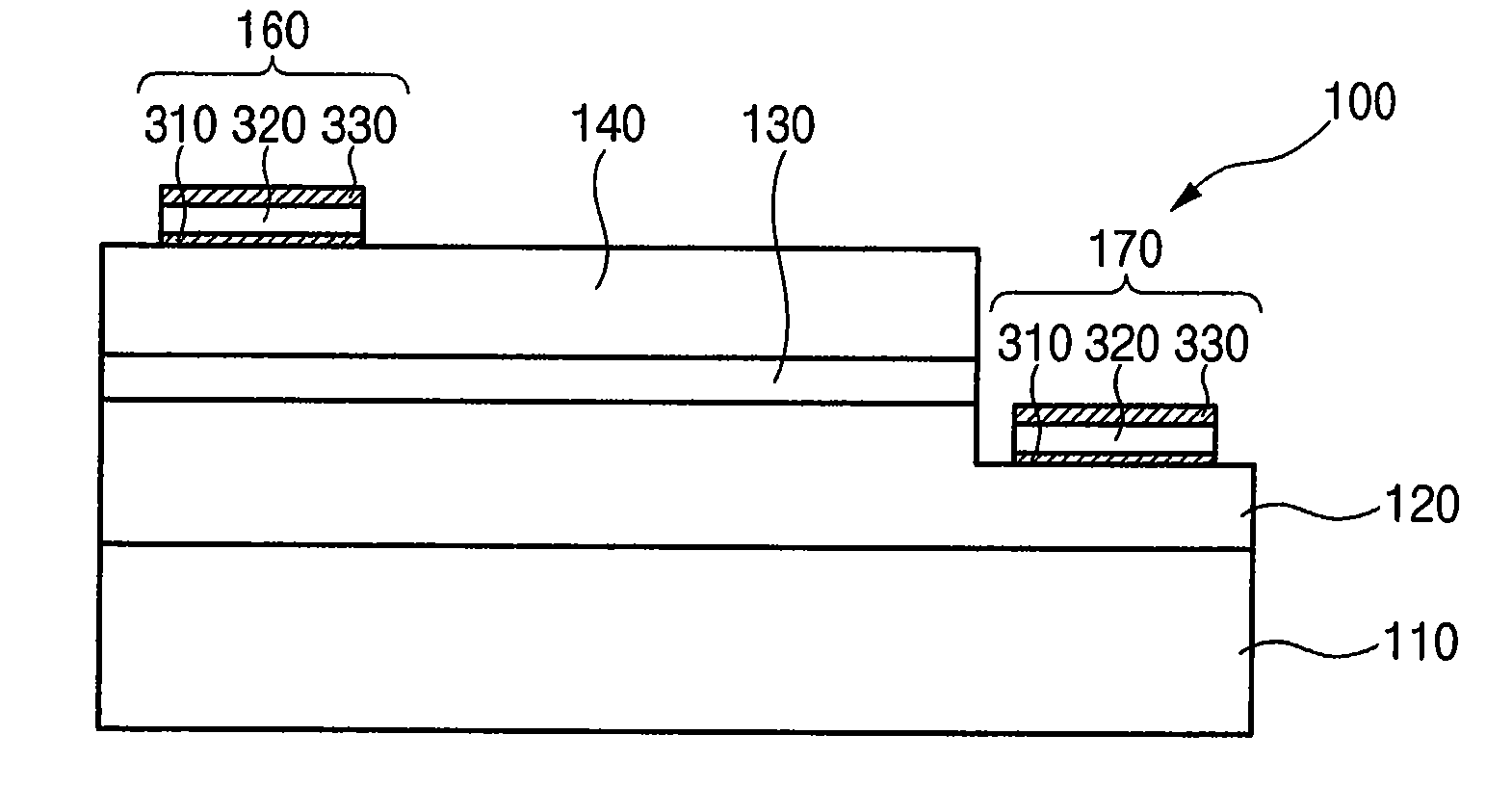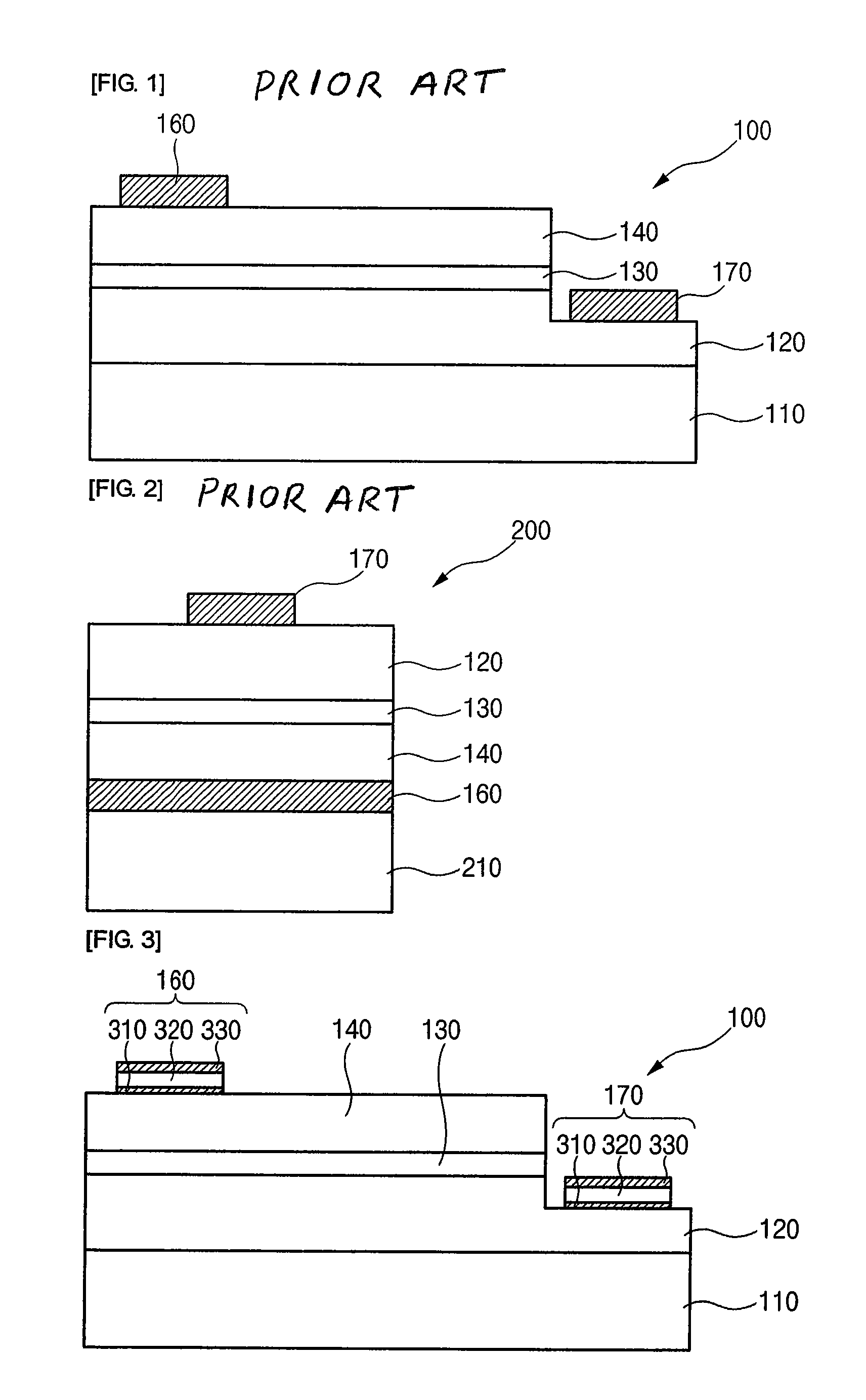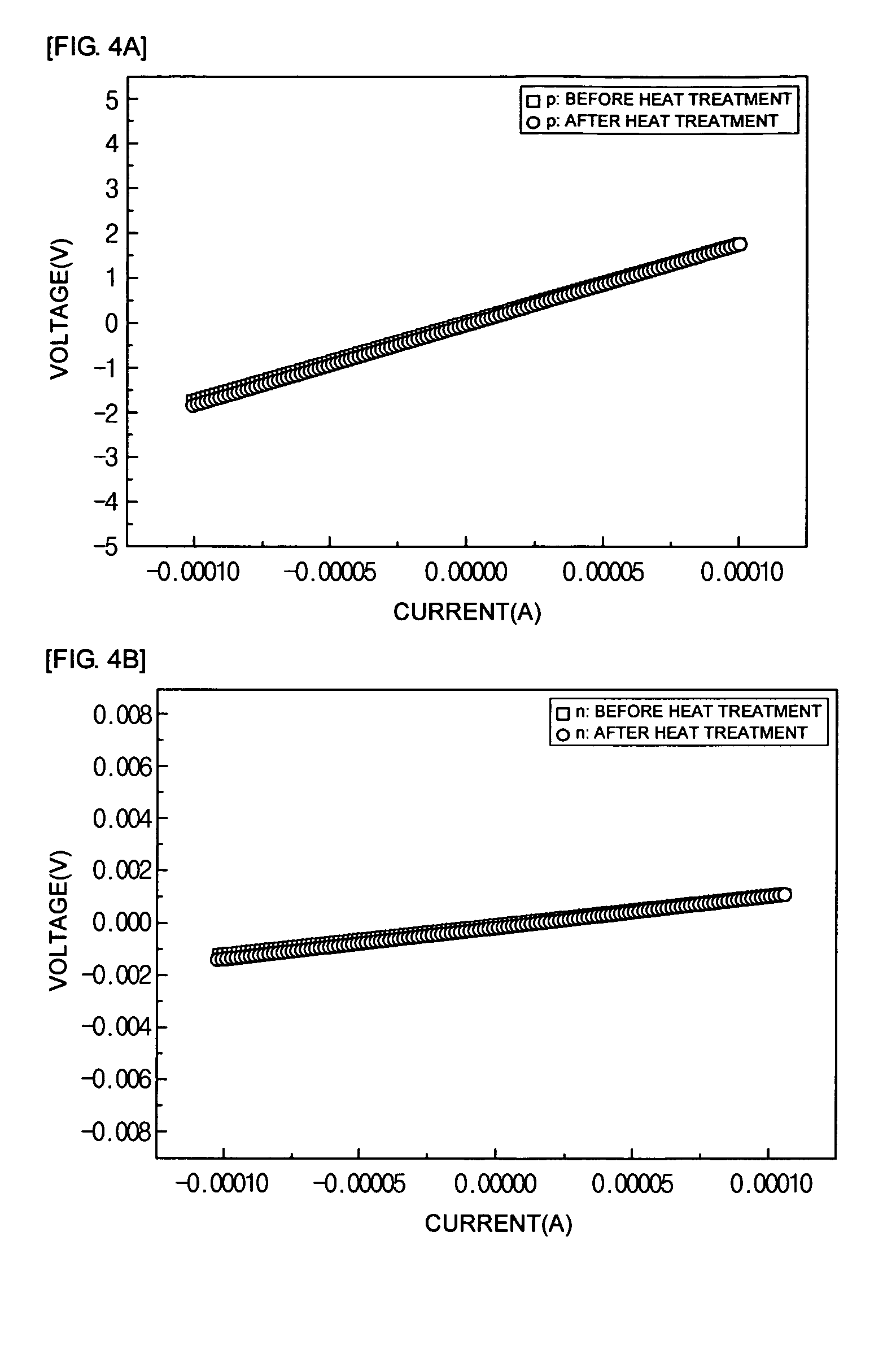Nitride semiconductor light emitting device including electrodes of a multilayer structure
a multi-layer structure, light-emitting device technology, applied in the direction of semiconductor devices, basic electric elements, electrical appliances, etc., can solve the problems of reducing the entire luminous efficiency of the device, reducing the light extraction efficiency, and difficult to form ohmic contact with the electrode, so as to improve reliability, excellent reflectivity and reduce the heating value of the device.
- Summary
- Abstract
- Description
- Claims
- Application Information
AI Technical Summary
Benefits of technology
Problems solved by technology
Method used
Image
Examples
first embodiment
[0039]First, a nitride semiconductor LED according to a first embodiment of the invention will be described in detail with reference to FIG. 3. FIG. 3 is a sectional view illustrating the structure of the nitride semiconductor LED according to the first embodiment of the invention.
[0040]As shown in FIG. 3, a buffer layer (not shown), an n-type nitride semiconductor layer 120, an active layer 130, and a p-type nitride semiconductor layer 140 are sequentially formed on a substrate 110.
[0041]Preferably, the substrate 110 is formed of a transparent material including sapphire. Except for sapphire, the substrate 110 may be formed of zinc oxide (ZnO), gallium nitride (GaN), silicon carbide (SiC), or aluminum nitride (AlN).
[0042]The buffer layer (not shown) is formed of GaN and may be omitted.
[0043]The n-type or p-type nitride semiconductor layer 120 or 140 is formed of a GaN layer or GaN / AlGaN layer doped with conductive impurities, and the active layer 130 is formed to have a multi-quant...
second embodiment
[0060]Referring to FIG. 6, a second embodiment of the invention will be described. The descriptions of the same parts as the first embodiment of the present invention will be omitted for conciseness.
[0061]FIG. 6 is a sectional view illustrating the structure of a nitride semiconductor LED according to the second embodiment of the invention.
[0062]The nitride semiconductor LED 200 according to the second embodiment has almost the same construction as the nitride semiconductor LED according to the first embodiment. As shown in FIG. 6, however, the n-electrode 170 is formed on the rear surface of the n-type nitride semiconductor layer 120 on which the active layer 130 is formed, compared with the first embodiment in which the n-electrode 170 having a multilayer structure is formed on the n-type nitride semiconductor layer 120 exposed by removing portions of the active layer 130 and the p-type nitride semiconductor layer 140. Further, a support layer 210 is bonded to the rear surface of ...
PUM
 Login to View More
Login to View More Abstract
Description
Claims
Application Information
 Login to View More
Login to View More - R&D
- Intellectual Property
- Life Sciences
- Materials
- Tech Scout
- Unparalleled Data Quality
- Higher Quality Content
- 60% Fewer Hallucinations
Browse by: Latest US Patents, China's latest patents, Technical Efficacy Thesaurus, Application Domain, Technology Topic, Popular Technical Reports.
© 2025 PatSnap. All rights reserved.Legal|Privacy policy|Modern Slavery Act Transparency Statement|Sitemap|About US| Contact US: help@patsnap.com



